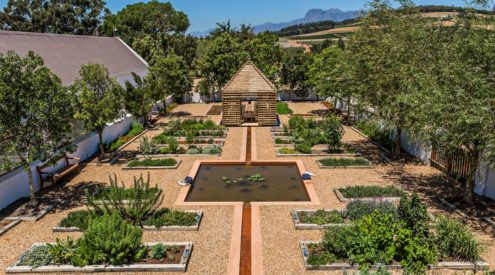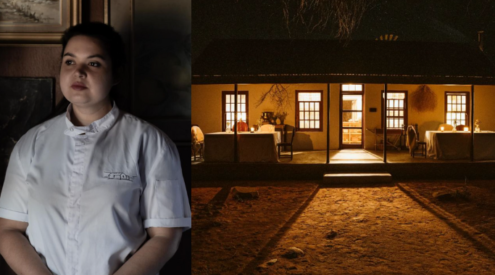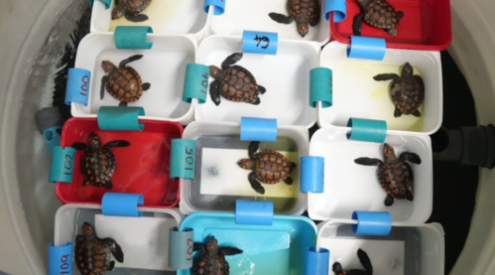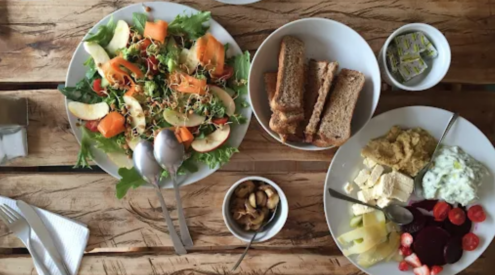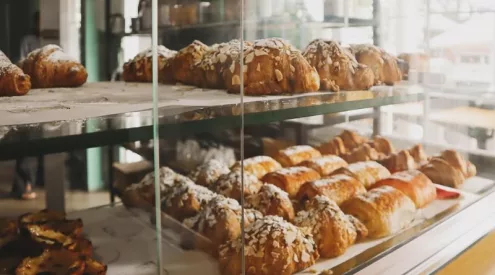The first thing I noticed about the malt portion of the SAB Heritage Tour was that it didn’t smell as nice as the hops bit. But then again, very few things smell as nice as fresh hops – at least to me – so unperturbed I followed the tour to the maltings plant, tucked away behind the Overberg town of Caledon.
In case you’re not au fait with the whole beer ingredient thing, malt doesn’t grow on trees. Nor plants, really. It is barley that’s the base agricultural product and the job of the highly technical staff at Caledon is to turn barley into malted barley – or malt for short. (And the job of the brewer to later turn malt, along with water, hops and yeast, into beer). It takes just over six days to process a 9360-ton batch of barley (they don’t do things by halves in this, the largest maltings in the southern hemisphere).
First, the grain is steeped in water to aid in step two, germination. We climb what seems like a thousand steps to witness the grains steeping – a process that sounds like it could have all the appeal of watching paint dry, but the group is suddenly mesmerised as we emerge into a dimly-lit room. The shorter members of our group have to stand on tiptoes to peep over the wall and into the metres-deep container filled with steeping barley. It bubbles and occasionally splashes geyser-like in what looks like a mad science experiment as air is injected into the water to stop the grains from drowning.
43 hours later (we don’t stick around for the full cycle), steeping is complete and germination begins, an 84-hour process that exposes the starches found inside the grains – the starches that contain all-important fermentable sugars. Without these, the glorious process of brewing would likely leave you with little more than a soggy vat of oatmeal.
With germination complete, the challenge is on to halt germination and remove unwanted moisture – the final product is dry enough that theoretically it could keep for decades, centuries even. A full 24 hours in the kiln rids the malt of water and provides a vital step in moulding the malt. It is here that the colour, aroma and of course the all-important taste are determined.
We end our tour in a control room where we pass around a variety of items and try to ignore the giant red button glaring up at us, just daring us to push it and see what would happen. First we inspect a selection of jars, each filled with items that get sifted from the harvested barley to ensure your pint is free of stones and twigs. Next it’s a photo of a maltings destroyed by a catastrophic dust explosion and as we emerge into Caldedon’s bright sunshine I ponder the perils of preparing beer ingredients. If it’s not spontaneous combustion, it’s dust explosions. I might just feel less like complaining next time I have a mere hangover.
After all the science – a topic that’s never been towards the top of my list of abilities – I am pleased to finish our visit with a somewhat simple-to-understand statistic. Since 1981, the Caledon maltings plant, the largest in the SAB Miller group, has produced four million tons of malt – apparently enough to produce beer for a row of quarts that would circle the globe no less than 96 times. Considering the only thing I knew about malt and barley before I stepped off the bus was that while the former makes a tasty snack when chewed, the latter makes for a teeth-shattering trip to the dentist, I felt pretty chuffed with my new-found knowledge. I think that calls for a pint…
Also read: SAB Heritage Tour: third ingredient – water




